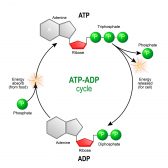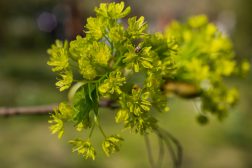Table of Contents
Definition
noun
plural: human milk oligosaccharides
An oligosaccharide that occurs in high concentrations and exclusively in the human breast milk
Details
Overview
Human milk oligosaccharide (HMO) is a carbohydrate present in high amounts in human breast milk. It consists of glucose, galactose, fucose, sialic acid and N-acetyl-glucosamine.1 It belongs to a group of oligosaccharides. Oligosaccharide is a type of carbohydrate. They differ from polysaccharides (another type of carbohydrate) based on the number of saccharides that make them up. In essence, an oligosaccharide contains fewer saccharides (about three to ten) than a polysaccharide does. Nevertheless, both of them are considered as complex carbohydrates as opposed to simple carbohydrates (sugars) that are made up of one or two saccharides, readily digested, and serve as a rapid source of metabolic energy. In contrast, complex need more time to be digested and metabolized. They often are high in fiber. Unlike simple carbohydrates, complex carbohydrates are less likely to cause spikes in blood sugar.
Properties
HMO is a soluble fiber. Similar to other common dietary oligosaccharides, such as fructooligosaccharide and galacto-oligosaccharide, HMO is not readily digested and absorbed in the small intestine. Thus, it travels to the colon where it will be fermented by the colonic flora, especially by the bifidobacteria, which are considered as the good bacteria in the gut. Currently, there are more than 200 HMOs identified with different degrees of polymerization. One of them is 2′-Fucosyllactose (chemical formula: C18H32O15
), which is cited as the most prevalent HMO in human breast milk. It accounts for more than 30% of total HMOs.2 It forms from lactose that is fucosylated in α-(1,2)-linkage.3 Despite the varying compositions and glycosyl linkages, most HMOs have a common structural backbone. Some of the common structural features shared by many HMOs are as follows: (1) having lactose residue (Galβ1-4Glc) at the reducing end and (2) galactose in lactose can be sialyated at α-(2,3)-linkage or at α-(2,6)-linkage to produce 3′-sialyllactose and 6′-sialyllactose, respectively. HMOs may be grouped into short-chain trisaccharides, such as sialyllactose and fucosyllactose, and complex high-molecular-weight oligosaccharides.3
Biological reactions
Biological reactions
HMO is produced as a constituent of human breastmilk. It is also present in the milk of other mammals, such as cows, pigs, goats, sheep, elephants, and primates but in amounts that are not as abundant and diverse in humans.3 As mentioned above, it consists of five monosaccharides: D-glucose, D-galactose, L-fucose, sialic acid (predominantly, N-acetylneuraminic acid), and N-acetyl-glucosamine. HMO is the third most abundant solid component, after lactose and fat.4 It is the distinguishing factor between human breastmilk and bovine milk. In cow’s milk, HMOs occur only in trace amounts. HMO is biosynthesized in the epithelial cells of the mammary glands. In particular, lactose (a disaccharide consisting of glucose and galactose) is synthesized in the Golgi apparatus of the cell. Lactose is formed when α-lactalbumin is expressed (during lactation), triggering the substrate specificity of the enzyme β1-4-galactosyltransferase to shift from N-acetylglucosamine to glucose. The enzyme thus links galactose to glucose forming lactose.
The detailed biosynthetic pathway of the various HMOs from lactose is poorly understood. The lack of sufficient models limits our knowledge on the enzymes and substrates involved in HMO biosynthetic pathways. What is known is that lactose can be fucosylated or sialylated in different linkages to form trisaccharides. Lactose, for instance, fucosylated in α-(1,2)-linkage forms 2′-fucosyllactose.5
Biological reactions
In humans, HMO is a soluble fiber. It resists digestion in the small intestine. However, it might be slightly absorbed intact, based on its presence in the urine of breast-fed infants.3 From the small intestine, HMO moves to the large intestine where the colonic bacteria, especially the bifidobacteria, metabolize HMOs by fermentation. However, metabolism of HMOs varies at different infancy stages. At infant age from birth to two months, sialylated and non-sialylated HMOs are excreted with the feces of the neonate. But when the child starts feeding on other foods, HMOs are no longer found in the feces, implying substantial metabolism. 5
Biological importance
HMO is a natural oligosaccharide that occurs in high amounts in the human breast milk. The human breast milk is a body fluid produced from the mammary glands of the human breasts. The breast milk is used for feeding an infant up to the time that the child reaches the weaning age, i.e. six months of age. Breastfeeding remains to be the best way to feed newborns. It has many benefits to the infant. Breast-fed children show decreased risk to obesity, asthma, eczema, and dental problems. As of now, there is no infant formula that can match breastmilk. One of the reasons of this is the presence of oligosaccharides, such as 2′-fucosyllactose. HMOs are naturally abundant in human breastmilk while present in only trace amounts in bovine milk. 2′-fucosyllactose is being produced synthetically for use as supplement on infant formula.
HMO seems to have a prebiotic effect. As a prebiotic, it can promote the growth of beneficial bacteria, such as bifidobacteria. (N.B.: Prebiotics should not be confused with probiotics. Prebiotics are those that promote the growth of beneficial gut microorganisms whereas probiotics are substances containing the beneficial microorganisms.) With HMOs, the good bacteria gain the growth advantage over the harmful, pathogenic bacteria. Thus, HMO helps ensure a healthy intestinal microbiome.
HMOs are also believed to provide immune protection. They were presumed to diminish viral and bacterial infections and protect from diarrhea and respiratory diseases. Bacteria and viruses bind to these glycan receptors to infect their host cell. HMOs prevent them from binding to the cell by mimicking the glycan receptors on the cell surface of the intestinal mucosa. Thus, instead of the intestinal cells, pathogenic microbial cells bind to HMOs, thereby preventing them from infecting and causing a disease. HMOs are also postulated to modulate gene expression in the intestinal epithelial cells. This leads to changes in cell surface glycans.5
HMOs are also presumed to act as a source of sialic acid residues. Sialic acid is an essential nutrient, especially during brain development and cognition of a child.5
Supplementary
Abbreviation
- HMO
Synonym
Further reading
See also
- oligosaccharide
- breast milk
Reference
- Human Milk Oligosaccharides (HMO): Uses, Health Effects. (2014, September 18). Retrieved from ://www.nutrientsreview.com/carbs/human-milk-oligosaccharides-hmo.html Link
- Lee, W.-H., Pathanibul, P., Quarterman, J., Jo, J.-H., Han, N., Miller, M. J., … Seo, J.-H. (2012). Whole cell biosynthesis of a functional oligosaccharide, 2′-fucosyllactose, using engineered Escherichia coli. Microbial Cell Factories, 11(1), 48. ://doi.org/10.1186/1475-2859-11-48 Link
- Han, N. S., Kim, T.-J., Park, Y.-C., Kim, J., & Seo, J.-H. (2012). Biotechnological production of human milk oligosaccharides. Biotechnology Advances, 30(6), 1268–1278. ://doi.org/10.1016/j.biotechadv.2011.11.003 Link
- Chen, X. (2015). Human Milk Oligosaccharides (HMOS). Advances in Carbohydrate Chemistry and Biochemistry, 113–190. ://doi.org/10.1016/bs.accb.2015.08.002 Link
- Bode, L. (2012). Human milk oligosaccharides: Every baby needs a sugar mama. Glycobiology, 22(9), 1147–1162. ://doi.org/10.1093/glycob/cws074 Link
© Biology Online. Content provided and moderated by Biology Online Editors







